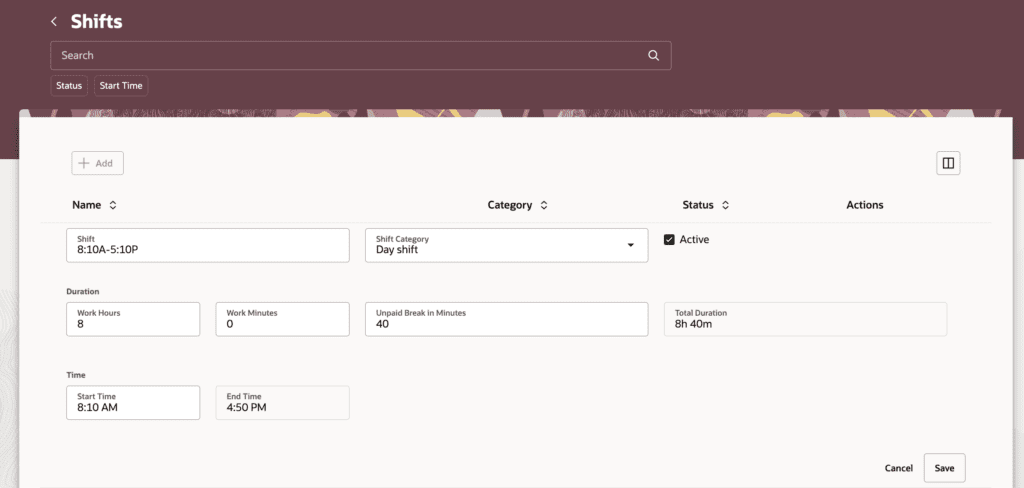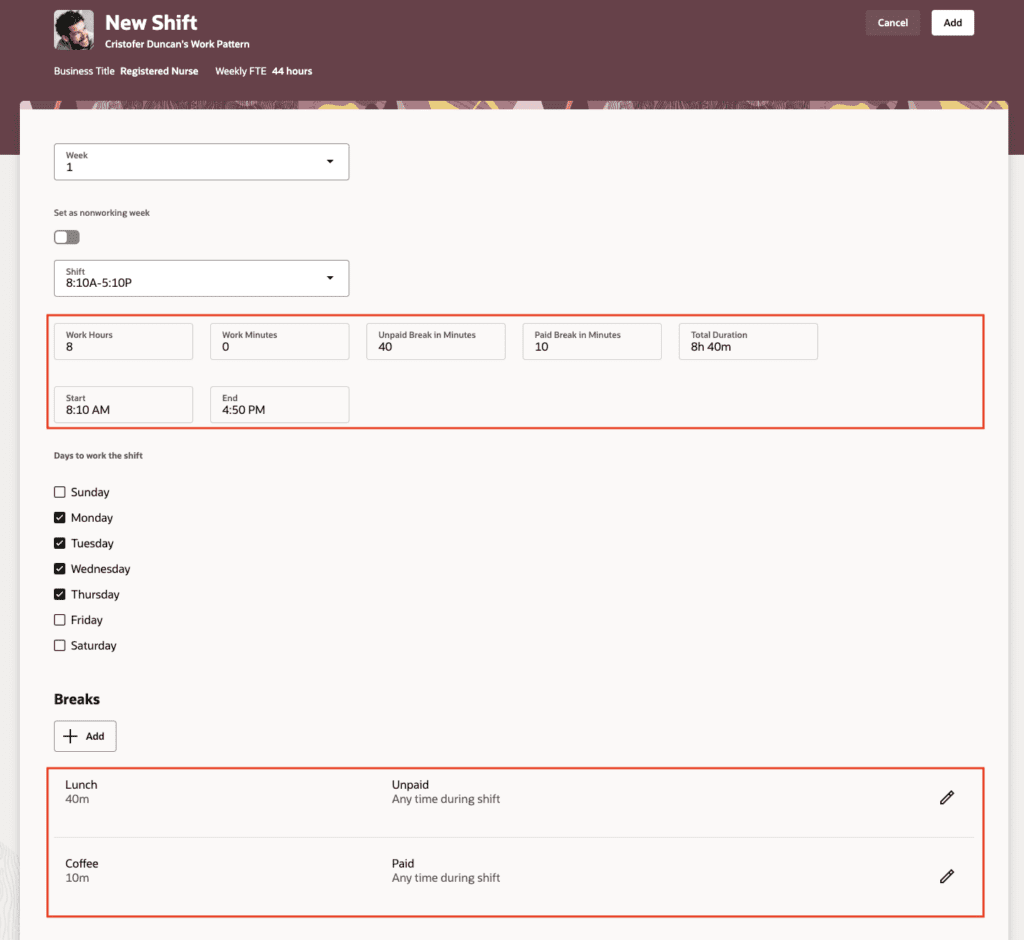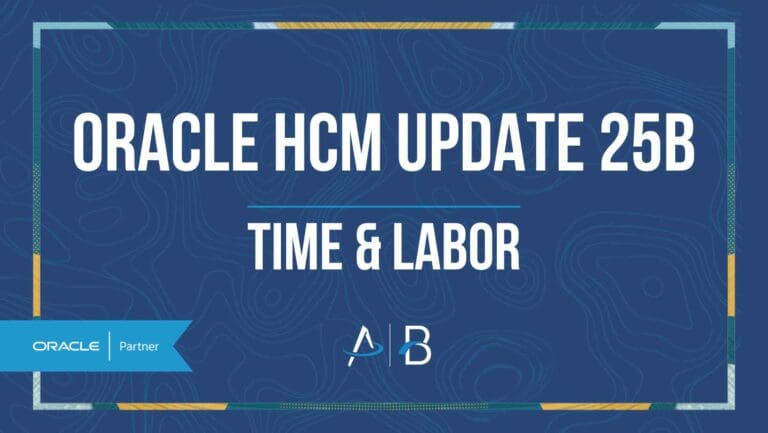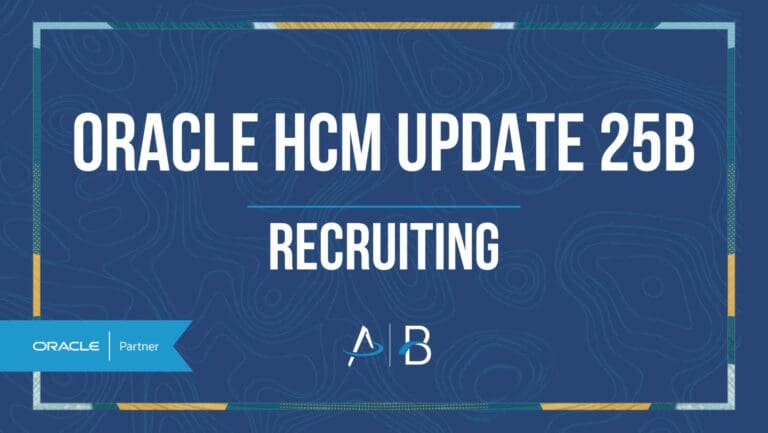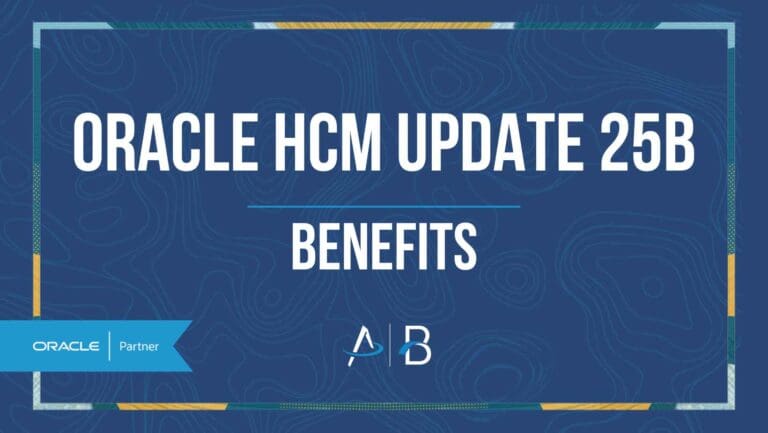Oracle HCM Update 25B: Human Resources
Medium Impact

Feature Enablement
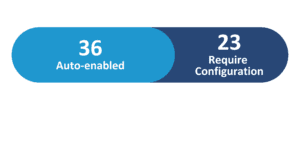
Redwood Features
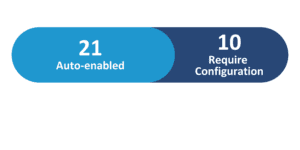
Generative AI Features
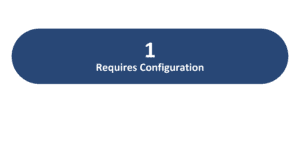
25B Update Features Covered:
- Redwood Experience
- Generative AI
- Evaluate Journey Task Performers and Owners During Task Initiation
- Hide Inactive Worker Assignments When Assigning Journeys
- Mandatory Native eSignature Signing Pad
- Work Pattern Enhancements
1. Redwood Experience
The 25B Human Resources release delivers many quality-of-life updates to existing Redwood pages and features, expanding these features’ utility, allowing for greater customization, and further improving the efficiency of Redwood Human Resource processes. Several employment processes receive new supported functionality, with notable additions including the availability of Guided Journeys on the Redwood Pending Workers page and the ability to create a Requisition from the Redwood Positions page. Enhancements to Person and Document Records pages offer additional security configuration and data protection, including options for data masking and hiding actions. Furthermore, the release delivers several enhancements that streamline data presentation, such as displaying prior records on the Redwood Additional Person Info page.
2. Generative AI
The 25B Human Resources release sees minor updates to Oracle’s AI services, with only one delivered feature in the form of Manager Survey Analytics using Generative AI. Users can now choose to have AI summarize survey text responses or generate sentiment analyses based on those responses, offering an overview on whether responses are positive, negative, or neutral. This feature provides a time-efficient, succinct method to analyze survey responses and pinpoint key insights present within the survey data.
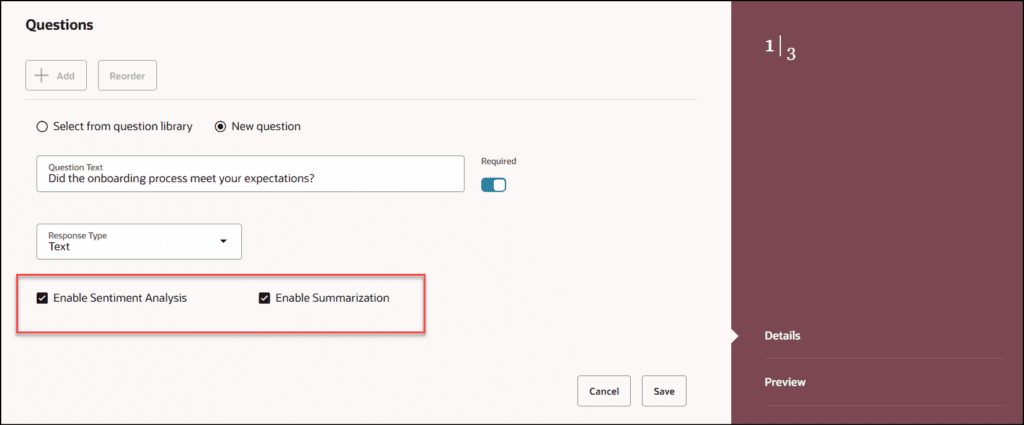

3. Evaluate Journey Task Performers and Owners During Task Initiation
Quick Notes:
Journey tasks can now be configured to evaluate task performers and owners during task initiation instead of task allocation when selecting the correct corresponding option. This enhancement provides greater flexibility in how tasks are evaluated in certain circumstances, specifically applying to tasks that are dependent on other tasks, are deferred based on a delay duration, or are deferred based on days for initiation.
For example, a dependent task will initially be disabled until the necessary preceding task is complete. Once the preceding task is complete and the dependent task initiated, it will re-evaluate the task performer and update accordingly if there were any changes from when the task was initially assigned. Additionally in this instance, the dependent task will be removed from the original performer’s list. This feature ensures that journey tasks are assigned to the appropriate performers.
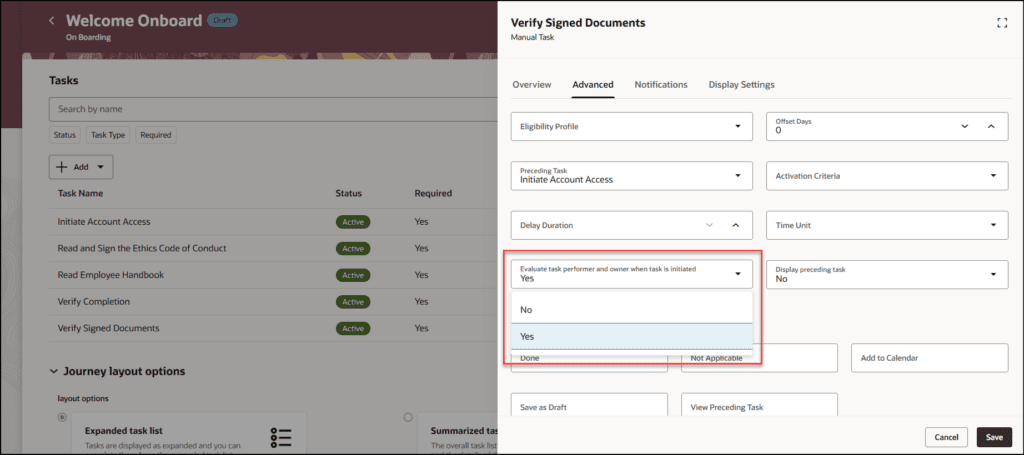
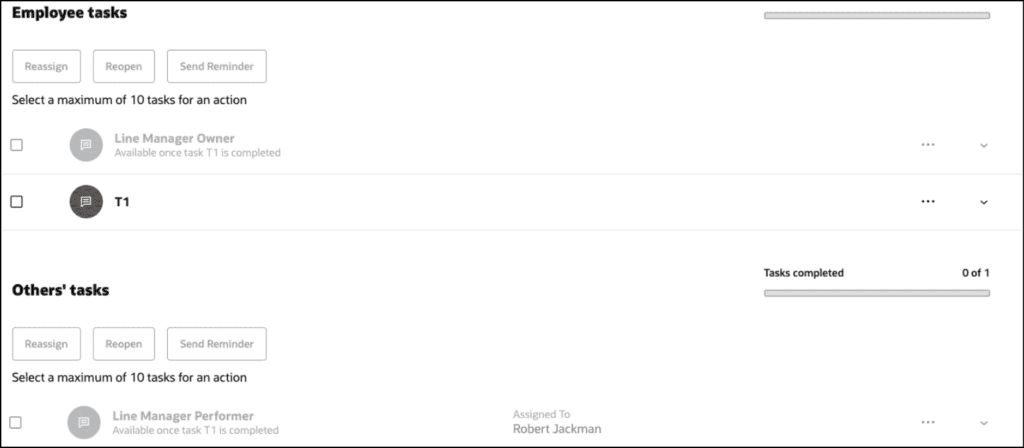
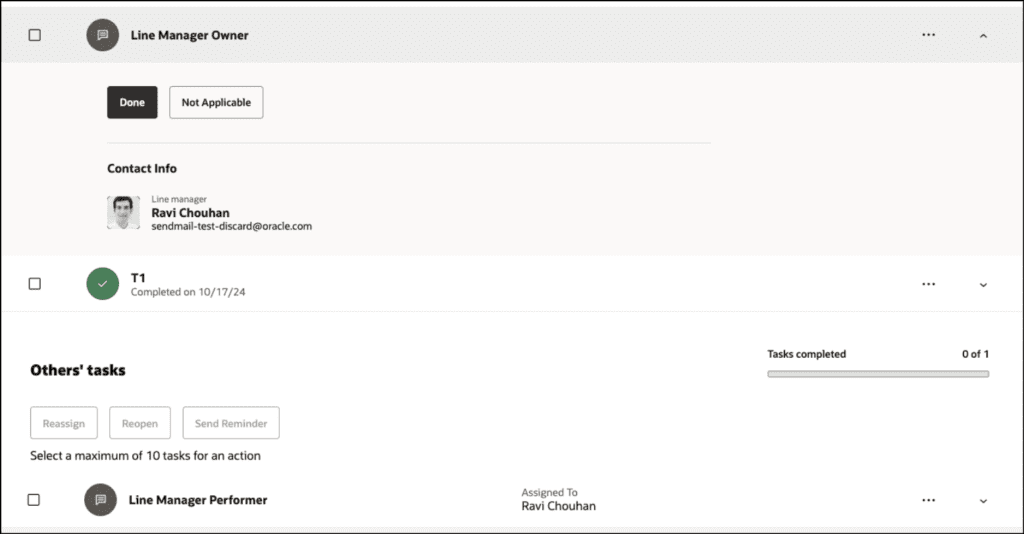
4. Hide Inactive Worker Assignments When Assigning Journeys
Quick Notes:
You can now configure Journeys to only display active assignments in the appropriate List of Values (LOV) field when assigning journeys. This greatly reduces clutter and makes searching for workers’ assignments easier.
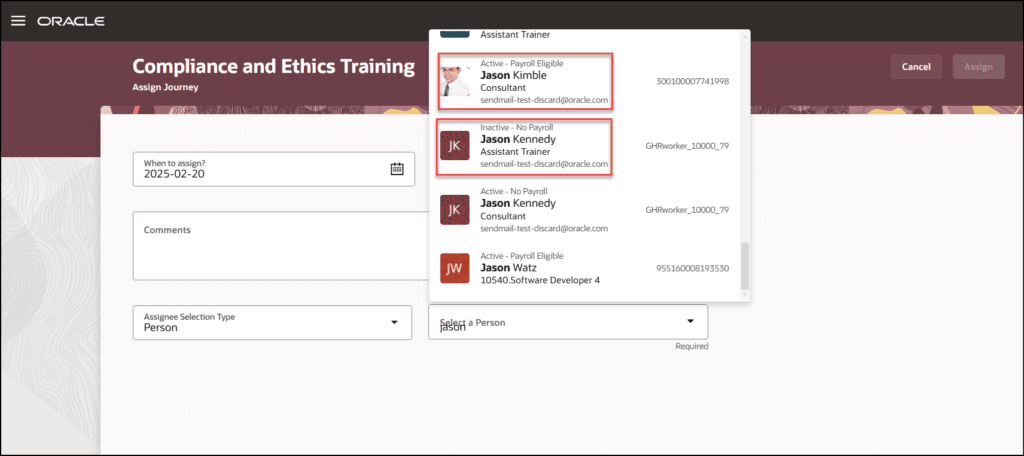
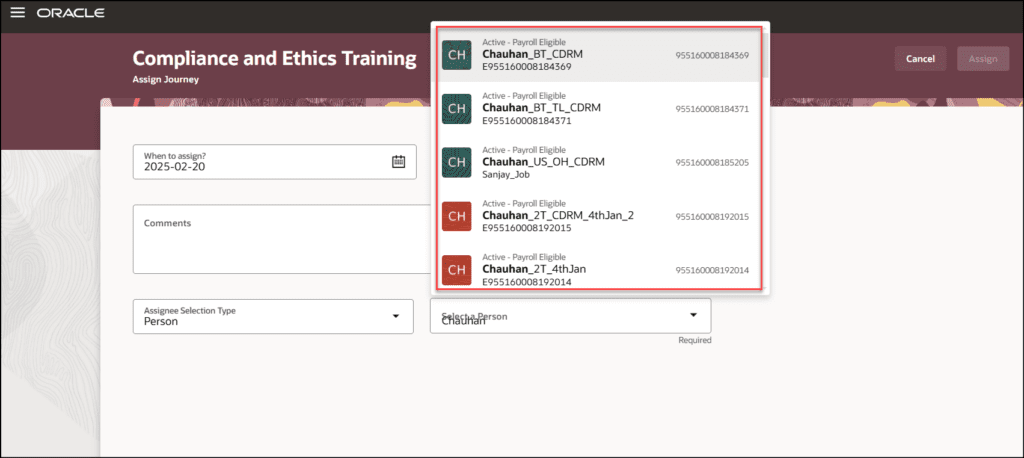
5. Mandatory Native eSignature Signing Pad
Quick Notes:
Oracle’s Native eSignature signing pad now requires users to electronically sign on them before users can mark the task as complete. When a signature is mandatory, the Done button is initially disabled and only becomes enabled once the eSignature pad has been signed. This feature ensures that users are actually signing the designated field when required, helping to reduce potential legal or policy complications.
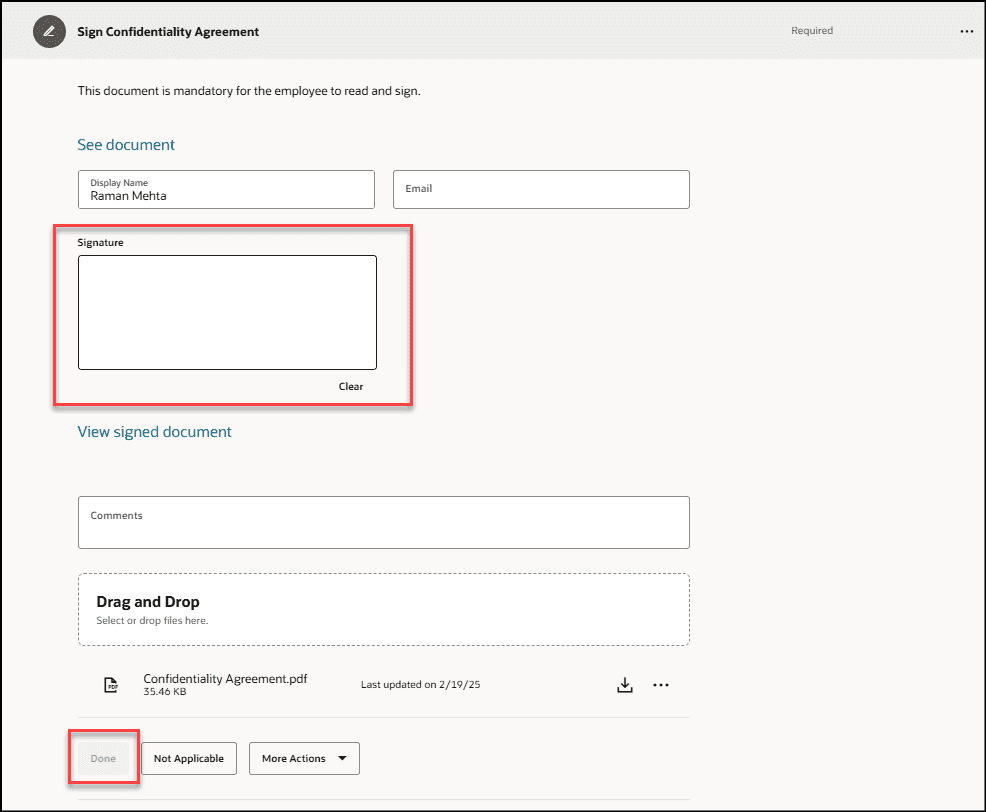
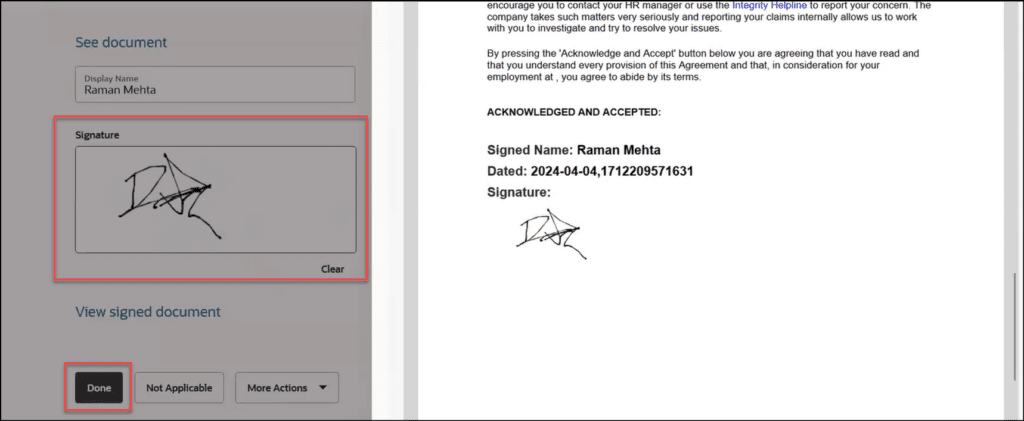
6. Work Pattern Enhancements
Quick Notes:
Minute Work and Break durations within Enterprise Shifts and Work Patterns can now be defined in any number of minutes. Previously, these fields had to be defined in 15-minute increments. Workforce Schedules can also use these shifts and patterns, but workloads still need to be defined in 15-minute increments.
This enhancement allows organizations to more accurately capture their workers’ work patterns, as these fields can be recorded precisely.
